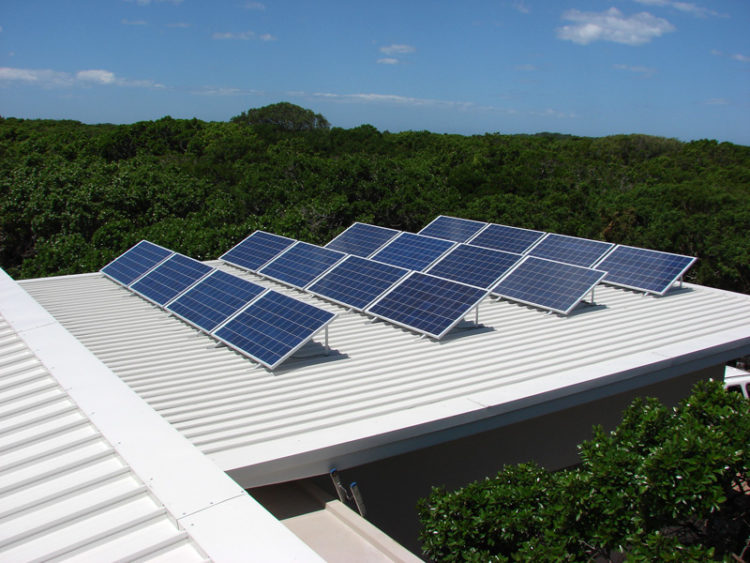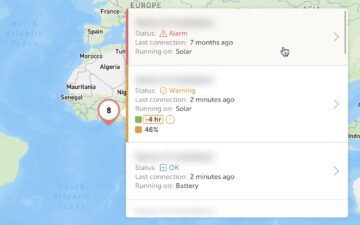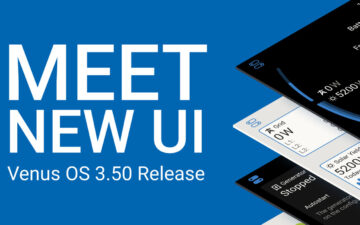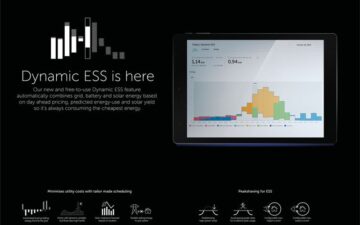
Synchronizing multiple BlueSolar charge controllers MPPT 150/70 is now possible! Synchronizing chargers, also known as paralleling, has several advantages:
- Don’t waste solar power: all chargers will always be in the same state, no risk that one of them switches to float to early
- Simple wiring: connect only one temperature sensor and one voltage sense
- Run synchronized equalisation charges
- Monitor them as one big charger on the Color Control GX
- And, a couple of weeks from now, also on the VRM Website
What you need to know, and how to do this
First of all make sure that all chargers are running firmware version v2.00 or newer. At the time of writing these post, we are still shipping chargers with older firmware versions. A special USB to VE.Can interface is needed to update the firmware. Contact your distributor or Area manager for this. Also ask for the latest firmware file for the MPPT 150/70. Then see VUP on our software and downloads page for detailed instructions.
After having all of them running the right firmware version, make sure that all charger related settings, such as battery type, absorption voltage and equalise settings are the same on all chargers. Relay configuration does not need to be the same.
Verify that each MPPT is connected to its own PV strings, otherwise it won’t work. Note that having one MPPT tracker for each smaller string is also bring a much better MPP efficiency.
And then do the magic:
Connect them together with a network cable. Use the VE.Can communication ports for the cable, and don’t forget the VE.Can terminators. That is all! No pc configuration or any special settings needed.
To check that you have successfully linked them up, look at the network icon in the display:
It should be on and blink shortly every couple of seconds. Just being on indicates that there is VE.Can communication. The short blink indicates that it runs in synchronisation with other chargers. In case the icon does not come on, make sure that you have not forgotten the terminators. And make sure to use a high quality and straight RJ-45 utp cable.
In case the icon comes on, but does not start blinking, first verify that the firmware is v2.00 or higher. And if all else fails, check that the device instances are the same on all chargers. The factory default for device instance is always 0. See last section of this post for more information on device instances.
The maximum number of chargers that can be synchronized is 25. Note that this includes other types of chargers in the same group, such as the Skylla-i. And the Multi in case of a Hub-1 configuration.
When working with synchronized chargers, these are the typical error messages:
Error 65: charger disappeared during operation
The charger showing this error has lost communications with one of the other chargers in the group. All chargers will still continue to charge. Error 65 can be fixed by restoring communication between the chargers. Or by entering the setup menu and leaving it again.
Error 66: Incompatible device
The charger is being paralleled to another charger that has different settings or an incompatible charge algorithm. Make sure that all settings are the same and update firmware on all chargers to the latest versions.
Connecting them together without synchronizing
It is also possible to connect MPPTs together without making them synchronize. This is necessary when chargers are connected to separate battery banks, and also connected together on VE.Can to be monitored on one Color Control GX. This is where the device instance is for. Think of it as a group number. It is a number between 0 and 255, and chargers will form a group and synchronize with other chargers that operate on the same group. The factory default for the group number is 0, which is what makes it is so easy to set this paralleling up. The device instance is in the menu with the name DI.
Other questions you might have
How does this work? Is there a master? How is that master selected? And what if it fails?
There is no dedicated master. On power up, the master selection algorithm will appoint a master. This algorithm elects the charger with the newest version of our charge algorithm. In case the master fails, or gets disconnected from the group, another charger will take over the master-role: no interruptions. Error 65 is shown on the displays when this happens, to indicate that there is a problem.
Can I see which one currently has the master role? No, why would you want to do that?
I am doing protocol implementation, do I need to communicate to the separate chargers? And how do I do that? Can you provide some more details?
Each charger will have its own network address on VE.Can. To keep things simple for control panels, and also for customers doing protocol integration, we have chosen to have all the combining functions implemented in the master-role. The master communicates with all the slaves, adds all information together, and broadcasts it as NMEA2000 PGNs. The slaves will not broadcast any NMEA2000 PGNs. They are communicating with the master through proprietary VREGs. See the datacommunication whitepaper for more information.
The end
If you have any questions, please post them below.









